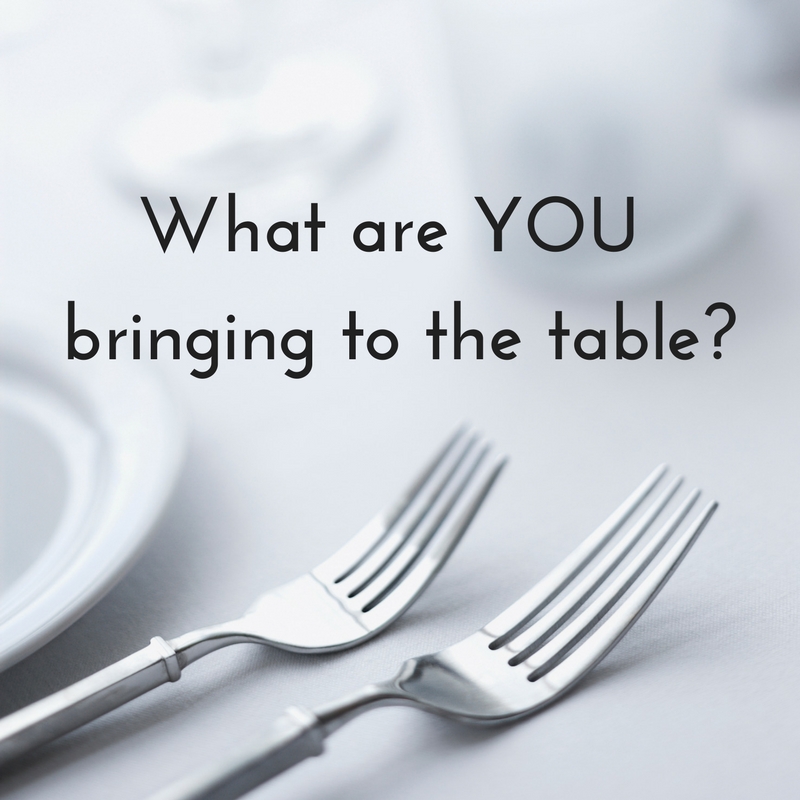As someone who has dedicated a lot of my time over the last 11 years to cooking for large groups (mostly retreats), I’ve come to learn a thing or two about what it takes to nail a meal for a crowd. For many people, Thanksgiving is the one time of year when they attempt this type of cooking, so I am happy to share some of the best advice based on my accumulated experiences in the kitchen:
1) Read all your recipes through ahead of time. I’ve heard stories from students at my cooking classes and retreats over the years about kitchen fails that resulted after they failed to read recipes ahead of time – e.g., learning an hour before a meal that there was a step that required overnight soaking or chilling. So, don’t just make a shopping list ahead of time, read through the instructions and take note of any time requirements or special equipment you may need.
2) Make a detailed plan. I attribute some of my success (and my ability to stay very, very calm in the kitchen) less to time I spent in formal culinary training, and more to my former career doing project management for a consulting firm. Cooking is just one big project…and having a plan makes all the difference. I learned the value of a plan early on, when as a child I would watch my mother prepare for Thanksgiving by making a step-by-step, to the minute list of the day’s kitchen action: “Make cranberry sauce: 2:15 p.m. Put turkey in oven: 3:00 p.m. Make gravy: 6:00 p.m.”
If you’re newer to cooking for a crowd, I’d recommend something like the approach above. For those with greater confidence, a general workflow is a good idea. I usually divide the day into three sections, and outline what I want to accomplish during each.
3) Be mindful of your oven. One thing to keep in mind especially on Thanksgiving is competition for your oven space. Different dishes may require different cooking temperatures, so you’ll need to plan to stagger things in some instance, or the issue may be too many pans for the space available, so again, you’ll need a plan to get everything baked in time. Identify in advance things that can be baked early on and reheated (or kept in a warming drawer). For me on Thanksgiving, this is usually stuffing and bread pudding. I’ll make both in the morning and give them a gentle reheat before serving.
4) Ask for help. Identify things that could be really helpful and ask others to assist, even if it’s something small like picking up ice for cocktails or an ingredient you forgot to grab at the market. Invite family members or friends to assist you in the kitchen, and be sure to have tasks identified for them in advance so you can seamlessly work others in your kitchen flow (you might include these in the detailed plan you make for step #2 above.)
Release the need to control everything, and ask guests to bring dishes to complement your menu. It’s okay to be specific in what you request others to bring.
5) Clean up camp style. At many of the retreats I cook at, we wash dishes camp style: I set up three large tubs, one of soapy water with a sponge, and two with hot water for rinsing. Guests then wash their dishes and utensils and either leave them to dry on an empty drying rack, or towel them dry and stack them up. Over the years of doing this, many repeat retreat guests have shared how employing this system at their family gatherings has been life-changing. You’ll still need to clean up serving and prep dishes, but you’ll prevent someone from getting stuck loading the dishwasher or washing by hand and missing out on all the fun.
Camp-style dishwashing system. Photo credit: https://www.freshoffthegrid.com
6) Have fun. This advice should probably be #1, as it really is the most important. Thanksgiving isn’t about serving diner at the precise moment you had envisioned, or creating only perfectly plated, Instagram-worthy creations. In fact, it’s the small (or epic) blunders that your family and friends are most likely to remember and to share stories of at future holiday gatherings. Have fun while you cook, and don’t only focus on the outcome of your cooking. Let yourself infuse a lot of love, not anxiety, into your food and your guests will taste it and appreciate it.
Do you have any other tips you would add? Share in the comments below :)





